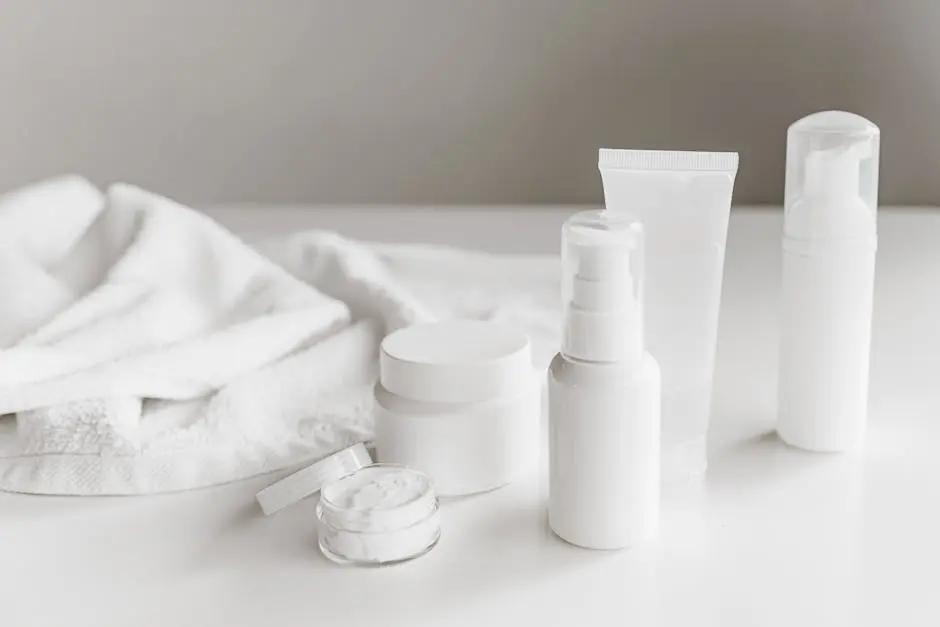If you’re on the hunt for the perfect moisturizer, you’ve likely come across the term ‘lanolin-free.’ But what does that really mean? In this blog, we’ll explore the fascinating world of lanolin-free moisturizers, unraveling surprising facts that could change your skincare game. Whether you’re sensitive to lanolin or simply prefer alternatives, this guide is packed with insights that are sure to enlighten you.
1. What Is Lanolin and Why Avoid It?
Lanolin is a natural substance derived from sheep’s wool. While it has moisturizing properties, some individuals may experience allergies or sensitivities to it, making lanolin-free options more appealing.
In fact, lanolin can sometimes cause skin irritation and breakouts, particularly for those with sensitive skin. This reality has led many to seek out alternative products that can hydrate without the drawbacks. Knowing that lanolin is a byproduct of the wool industry can also lead to ethical concerns among consumers, prompting them to explore other moisturizing options that align better with their values.
2. The Rise in Popularity of Lanolin-Free Products
As consumers become more aware of skin sensitivities and ethical sourcing, the demand for lanolin-free products has surged. Brands are responding with innovative alternatives.
More than just a trend, this shift is empowering consumers to prioritize their skin’s health alongside their ethical beliefs. From major skincare brands to indie labels, an increasing number of products on the market proudly advertise their lanolin-free formulations. It’ll be interesting to see how this trend shapes the future of the beauty industry, nudging brands towards transparency and honest ingredient lists that cater to diverse skincare needs.
3. Understanding the Ingredients in Lanolin-Free Moisturizers
Lanolin-free moisturizers often replace lanolin with plant-based oils and extracts. Common ingredients include shea butter, coconut oil, and jojoba oil, which provide hydration without the potential irritants.
These natural emollients not only nourish the skin but also create a protective barrier that locks in moisture effectively. Furthermore, many brands incorporate additional antioxidants and vitamins, enhancing the benefits of their formulations. For instance, Vitamin E is frequently included for its skin-repairing properties, giving users a multipurpose moisturizer that goes beyond basic hydration.
4. How Lanolin-Free Moisturizers Benefit Sensitive Skin
For those with sensitive skin or allergies, lanolin-free moisturizers can be a game changer. Their gentler formulations help reduce irritation while still delivering essential moisture.
The absence of lanolin means fewer chances of allergic reactions or flare-ups, which can significantly enhance daily comfort. Moreover, many formulations include soothing ingredients such as aloe vera or chamomile, which help calm inflammation and redness. Users often report that the transition to these products not only improves their skin’s appearance but also allows them to feel more confident about their skincare choices.
5. Debunking Myths About Moisturizers Without Lanolin
Many believe that lanolin-free moisturizers are less effective. In reality, they can be just as potent, offering rich hydration without the baggage of common allergens.
A common misconception is that only heavy, oil-based moisturizers can adequately hydrate the skin. However, lanolin-free products often utilize advanced formulations that include humectants, like glycerin, which draw moisture into the skin. This means that even lightweight moisturizers you once thought inadequate can deliver impressive results, leaving your skin feeling soft and supple without any heaviness.
6. The Eco-Friendly Aspect of Lanolin-Free Options
Choosing lanolin-free products often aligns with eco-conscious choices. Many brands prioritize sustainable sourcing and cruelty-free practices, making them favorable for the environmentally aware consumer.
For instance, several companies now focus on using ethically sourced plant extracts and renewable resources, minimizing their environmental footprint. This conscious approach resonates deeply with a growing demographic that values sustainability in all aspects of their lives. By opting for lanolin-free moisturizers, you’re not just doing wonders for your skin, but also playing a part in supporting a more responsible beauty industry.
7. Exploring the Vegan Connection
For vegans or those avoiding animal byproducts, lanolin is a no-go. Lanolin-free moisturizers offer a vegan-friendly alternative that caters to those seeking plant-based skincare.
Not only do these products meet vegan standards, but they can also provide peace of mind to consumers who want to ensure that their skincare aligns with their ethical beliefs. The beauty of this transition lies in the sheer variety of options available—from refreshing gels to rich creams—ensuring everyone’s specific skincare needs can be met without any animal-derived content. So if you’re on a vegan journey, lanolin-free moisturizers make for a seamless fit.
8. Impact on the Environment: A Closer Look
The production of lanolin can have environmental impacts due to animal farming practices. Opting for lanolin-free products can support more sustainable and ethical skincare choices.
This aspect is critically important as consumers become more conscious of their choices, understanding the link between their purchases and the broader environmental implications. By selecting skincare products that omit lanolin, you signal to the market that sustainability matters. As demand increases for eco-friendly options, brands are encouraged to innovate, look for greener solutions, and practice responsible production. It’s a powerful cycle of positive change.
9. The Science Behind Effective Hydration
Learning about how lanolin-free moisturizers maintain skin hydration can help you appreciate their effectiveness. They often utilize humectants that attract moisture to the skin, ensuring lasting hydration.
These ingredients work wonders, especially in drier climates where skin can quickly lose its moisture. Additionally, the combination of occlusives—like natural oils—helps to seal in that hydration, leading to a more balanced skin barrier overall. By understanding this science, you’ll be better equipped to choose products that provide true hydration and transform your skincare routine.
10. User Experiences with Lanolin-Free Moisturizers
Many users report positive outcomes with lanolin-free moisturizers, noting softer, more supple skin. Gathering reviews and testimonials can provide insights into their performance.
For many, the journey to finding the perfect moisturizer can be daunting with all the products available. However, feedback from satisfied users consistently highlights the gentle nature and effectiveness of lanolin-free options. Satisfied customers often recall how these products helped alleviate dryness, improved skin texture, and even helped with specific conditions such as eczema or psoriasis. Such testimonials not only encourage new users to delve into lanolin-free formulations but also strengthen the trust in their efficacy.
11. How to Choose the Right Lanolin-Free Moisturizer for You
Navigating the market of lanolin-free moisturizers can be daunting. Consider factors like skin type, sensitivity, and ingredient lists to find a product that truly fits your individual needs.
You might start by identifying the key concerns that your skin presents—are you dealing with acne, dryness, or maybe a combination of both? Products specifically formulated for oily skin often feature lighter textures that won’t clog pores, while those aimed at dry skin might showcase richer, more nourishing components. Additionally, doing a little research on ingredients can yield fantastic results, enabling you to choose a moisturizer that best complements and improves your unique skin conditions.
12. Future Trends in Skincare: Lanolin-Free Innovations
As the beauty industry evolves, new formulations and advancements in lanolin-free moisturizers are on the horizon. Staying informed about these trends can help you stay ahead in your skincare journey.
Trends such as sustainable packaging, ingredient transparency, and the use of innovative botanicals are gaining traction. Brands are increasingly incorporating cutting-edge technology to extract the best properties from plants, while also assessing the environmental impact of their processes. Keeping an eye on these developments will not only enhance your product knowledge but also empower you to make informed choices in a rapidly changing skincare landscape.








https://shorturl.fm/5k3p8
https://shorturl.fm/YWsPo